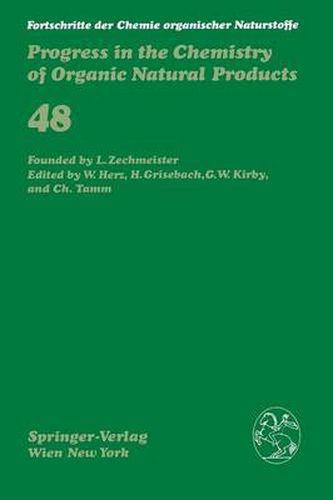Readings Newsletter
Become a Readings Member to make your shopping experience even easier.
Sign in or sign up for free!
You’re not far away from qualifying for FREE standard shipping within Australia
You’ve qualified for FREE standard shipping within Australia
The cart is loading…






This title is printed to order. This book may have been self-published. If so, we cannot guarantee the quality of the content. In the main most books will have gone through the editing process however some may not. We therefore suggest that you be aware of this before ordering this book. If in doubt check either the author or publisher’s details as we are unable to accept any returns unless they are faulty. Please contact us if you have any questions.
The metabolic products of micro-organisms can be classified either as compounds of primary metabolic concern or else as secondary metabolites - substances which are apparently non-essential to the producing or- ganism. Fungi have a remarkable capacity to produce such secondary metabolites, e. g. mycotoxins with a diverse array of structural and pharmacological properties (1). The present resurgence of interest in all aspects of mycotoxin research (2, 3) can be related to the impact of the hepatotoxins (aflatoxin, sporidesmin, and phomopsin), nephrotoxins (ochratoxin and citrinin), and dermal toxins (trichothecenes) on human and animal health. Some of the mycotoxins appear to act at the level of the central nervous system. Ergotism, the earliest known mycotoxicosis, that is a disease caused by mycotoxins, was attributed to the contamination of wheat by the parasitic neurotoxin-producing fungus, C/aviceps purpurea. These neuro- toxins elaborated by C. purpurea are collectively called the ergot toxins (4). The neurotoxin, citreoviridin (1) which causes paralysis in the extremities of laboratory animals, followed sometimes by convulsions and respiratory arrest, has been implicated in acute cardiac beri-beri in Japan (5). Tremoring has not been associated with citreoviridin or the structurally related aurovertins (2) (6) and asteltoxin (3) (7); these compounds are therefore excluded from this review. However, verrucosidin (4) (8), a tremorgenic compound which structurally resembles (1)-(3), will be described later.
$9.00 standard shipping within Australia
FREE standard shipping within Australia for orders over $100.00
Express & International shipping calculated at checkout
This title is printed to order. This book may have been self-published. If so, we cannot guarantee the quality of the content. In the main most books will have gone through the editing process however some may not. We therefore suggest that you be aware of this before ordering this book. If in doubt check either the author or publisher’s details as we are unable to accept any returns unless they are faulty. Please contact us if you have any questions.
The metabolic products of micro-organisms can be classified either as compounds of primary metabolic concern or else as secondary metabolites - substances which are apparently non-essential to the producing or- ganism. Fungi have a remarkable capacity to produce such secondary metabolites, e. g. mycotoxins with a diverse array of structural and pharmacological properties (1). The present resurgence of interest in all aspects of mycotoxin research (2, 3) can be related to the impact of the hepatotoxins (aflatoxin, sporidesmin, and phomopsin), nephrotoxins (ochratoxin and citrinin), and dermal toxins (trichothecenes) on human and animal health. Some of the mycotoxins appear to act at the level of the central nervous system. Ergotism, the earliest known mycotoxicosis, that is a disease caused by mycotoxins, was attributed to the contamination of wheat by the parasitic neurotoxin-producing fungus, C/aviceps purpurea. These neuro- toxins elaborated by C. purpurea are collectively called the ergot toxins (4). The neurotoxin, citreoviridin (1) which causes paralysis in the extremities of laboratory animals, followed sometimes by convulsions and respiratory arrest, has been implicated in acute cardiac beri-beri in Japan (5). Tremoring has not been associated with citreoviridin or the structurally related aurovertins (2) (6) and asteltoxin (3) (7); these compounds are therefore excluded from this review. However, verrucosidin (4) (8), a tremorgenic compound which structurally resembles (1)-(3), will be described later.